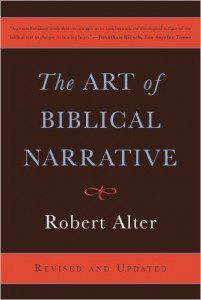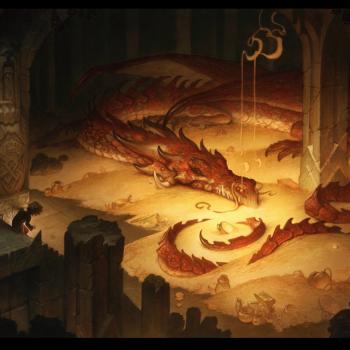 I picked up, The Art of Biblical Narrative by Robert Alter after I finished my last post.
I picked up, The Art of Biblical Narrative by Robert Alter after I finished my last post.
I was familiar with Alter, of course. I own his translation of the Pentateuch, The Five Books of Moses. Believe it or not, I hadn’t read The Art of Biblical Narrative. Nonetheless, I wasn’t surprised when I read,…
“…in many cases a literary student of the Bible has as much to learn from the traditional commentaries as from modern scholarship. The difference between the two is ultimately the difference between assuming that the text is an intricately interconnected unity, as the midrashic exegetes did, and assuming it is a patchwork of frequently disparate documents, as modern scholars have supposed. …the makers of the Midrash were often exquisitely attuned to small signals of continuity and to significant lexical nuances as any “close reader” of our own age.” p. 11 (bold mine)
Small signals
It is the signals that we’re deaf to.
Alter does a masterful job of showing the episode of Judah and Tamar is not an interruption of the story of Joseph in Genesis, but actually helps us understand that story. Small signals in both connect them to each other and bring them together in the end. Recall, when the time for blessing comes at the end of Jacob’s life, Judah and Joseph walk away with all the prizes.
This is also the way things work in the Gospels. What you see depends on what you’re looking for. If you look for connections, you’ll find them.
I’ve been preaching my way through Mark, and in a moment I’ll take a look at Mark 11:1 through 12:17, mainly because it is fresh in my mind. (I’ve preached just two sermons from that slice of scripture., mainly because I wanted to preach the narrative threads I’m talking about and to do that you need to preach from large slices of scripture.)
But before I look at it, I’d like to add two more problems to the list I posted last time.
Hurry Up and Get to the Moral
Tracing narrative threads calls for discipline. You must suspend judgment for an uncomfortably long time. What you often find is the string of penultimate judgments actually add up to something bigger. But since those smaller judgments seem to be good points in themselves, we stop reading.
It takes an ability to hold things in abeyance for a time, to live with unresolved tension, in order to get the larger point, the true moral of the story. But since we’re eager to get to the moral, we never get to the moral.
History trumps Literature
I think another problem is our inability to reconcile history and literature. We think literature is fiction and history is just a set of facts.
That misses a couple of possibilities.
First, history really isn’t just a series of facts. It may seem so from our perspective. But if Jesus is who the scriptures claim, he is the author of history. And history has a point: him. We’re told that all things were made by him and for him and all things hold together in him. So, there is a very big story being told with the history of the world, and the reason we don’t get it may be due to the very small sample we have to work with, i.e. our lives.
But here’s another possibility: we miss the theater in the facts. Have you ever noticed the histrionics of the prophets? They break things, they lie around without any clothes on, they marry harlots just to make a point. They have a thing for drama. And we see that in the passage from Mark I mentioned a moment ago.
Something can be history and artfully told too, not just because the writer selects the facts carefully and artfully renders them, but also because the facts were performed artfully. There’s no need for a dichotomy here for those with eyes to see.
Mark 11:1-12:17
So here’s the sequence of events:
The triumphal entry, a visit to the temple, the curse of the fig tree next day, back to the temple for driving out the money changers, seeing the withered fig tree the day after that, prayer and throwing this mountain into the sea, the authority of Jesus questioned, the parable of the tenants and the vineyard, then a question about taxes.
Here’s my premise. These are all connected.
Threads run through them. And like any stitching, threads come to the surface, then go beneath the surface, and then reappear further along. If you can recognize the threads when you see them, you’ll be able to follow them as they appear and disappear and reappear again.
To conclude today let me introduce one important thread. It’s initial appearance is a subtle and seemingly innocuous observation, something that could be interpreted as a mere fact.
Mark 11:11–
“And he entered Jerusalem and went to the temple. And when he had looked around at everything, as it was already late, he went out….”
“…it was already late,…”
I am reminded of Judas’s departure from the upper room when he betrayed the Lord in John’s gospel. We’re told, “…he immediately went out. And it was night.” (John 13:30)
What we have in the upper room, and also at the temple, are those small signals Alter is talking about. What “already late” signals is this: many things are about to end.
I’ll talk more about how this thread stitches together what follows next time.












